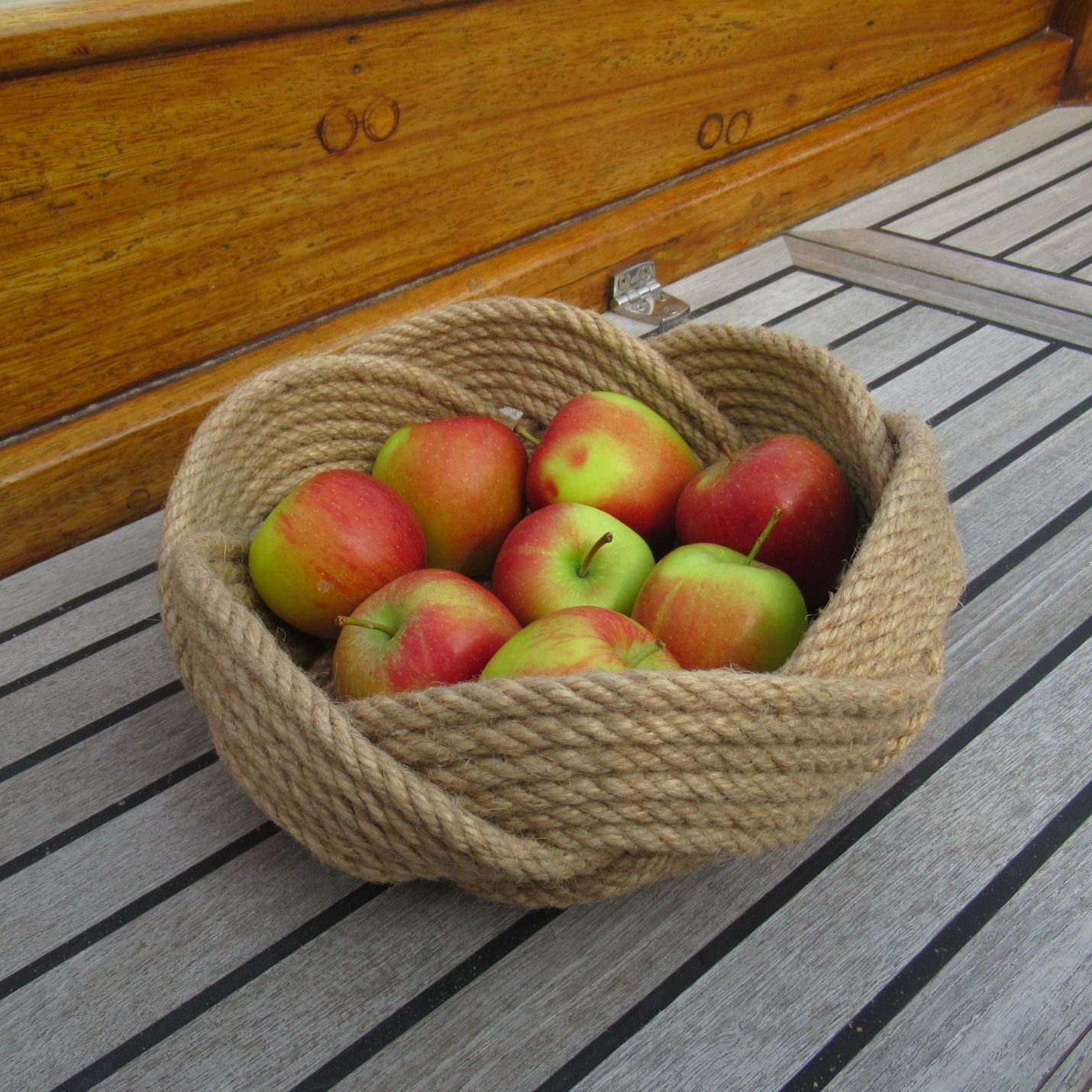How To Care For Natural Ropes
Caring For Jute, the "Golden Fibre"
Jute rope is my favourite for creating my baskets, it is is stiff enough to keep a bowl shape, but flexible enough to knot. I like the warm brown paper smell of jute, no oils are used in the rope making, such as with manila.
Jute, being made from plant fibres, known as the golden fibre can vary in colour from shades of off white, ecru, beige, brown, even flecks of black, but I think this adds to the texture and interest.
Jute is best kept clean primarily by vacuuming dust or dirt off.
If necessary, it is possible to wipe down with a damp cloth or sponge, and leave to dry naturally, out of direct sunshine.
If very soiled, agitate a little detergent in a bowl of warm water, until you create foam, then dab the jute with just the lather, and wipe off with a clean damp cloth or sponge. Leave to dry naturally out of the direct sun.
Being a natural plant fibre, Jute is affected by its environment. It will shrink a little when in cold, damp or wet conditions (5 to 10%), so any knot will tighten up, if the knot is already tight, it might be impossible to undo! Normally the rope will loosen when dry, and warm.
Jute is best kept for indoors or in a dry place, it isn't really suitable for exterior use. Poly Hemp rope would be a better choice for outdoors.
Do not use a washing machine or tumble dryer, and of course no harsh chemicals, like bleach, as these can break down the natural fibres.
My knot mats should be reshaped gently and left to dry flat after being cleaned, usually the mats improve with use, and the knot will settle, so more you walk on it, the better it will look .
Baskets can be gently reshaped if necessary, by placing a bowl or ball inside, and patting the edges around.
Jute, The Fantastic Fibre, 100% Bio-degradable and Compostable.
No pesticides or fertilisers are necessary for cultivation, which means it is possible to be grown easily by small family concerns in India and Bangladesh, who then usually sell through co-operatives. It can be planted quickly in areas that been flooded by the monsoon, once the water has receded, such as the Bengal and Ganges deltas, and harvested in 4 to 6 months.
The jute plant has many uses, the coarse outer fibres are used for firewood, and the green leaves can be eaten by people or animals. It can be harvested up to three times a year.
The stalks are bundled together then retted by being soaked in water for about 20 to 30 days. This enables the rough outer to be stripped off, before rinsing in clean water. Then the long silky fibres are sun dried before bailing and packing them for the jute market.
Uses of Jute
- Rope and Twine
- Eco packaging like sacking, and paper
- Textiles, incredibly it has more UV protection than cotton.
- Matting, carpet backing, and wall coverings.
- Future uses could be insulation, polymers, glass fibre, and building materials.
I make many knotted items from jute rope, such as flower girl baskets, fruit bowls and door knot mats.


Comments